- Home
- Michael Connelly
Harry Bosch Novels, The: Volume 2 Page 4
Harry Bosch Novels, The: Volume 2 Read online
Page 4
Victim had a previous history of loitering arrests in the Hollywood. (See AR 55-002, 55-913, 56-111, 59-056, 60-815 and 60-1121) Vice Detective Gilchrist and Stano described victim as a prostitute who periodically worked in the Hollywood area and had been repeatedly warned off. Victim lived at El Rio Efficiency Apts. located two blocks northerly of crime scene. It was believed that the victim had been currently involved in call girl prostitution activities. R/ O 1906 was able to make identification of the victim because of familiarity of having seen victim in the area in previous years.
Bosch looked at the reporting officer’s serial number. He knew that 1906 belonged to a patrolman then who was now one of the most powerful men in the department. Assistant Chief Irvin S. Irving. Once Irving had confided to Bosch that he had known Marjorie Lowe and had been the one who found her.
Bosch lit a cigarette and read on. The reports were sloppily written, perfunctory, and filled with careless misspellings. In reading them, it was clear to Bosch that Eno and McKittrick did not invest much time in the case. A prostitute was dead. It was a risk that came with her job. They had other fish to fry.
He noticed on the Death Investigation Report a box for listing the next of kin. It said:
Hieronymus Bosch (Harry), son, age 11, McClaren Youth Hall. Notification made 10/ 28-1500 hrs. Custody of Department of Public Social Services since 7/ 60— UM. (See victim’s arrest reports 60-815 and 60-1121) Father unknown. Son remains in custody pending foster placement.
Looking at the report, Bosch could easily decipher all of the abbreviations and translate what was written. UM stood for unfit mother. The irony was not lost on him even after so many years. The boy had been taken from a presumably unfit mother and placed in an equally unfit system of child protection. What he remembered most was the noise of the place. Always loud. Like a prison.
Bosch remembered McKittrick had been the one who came to tell him. It was during the swimming period. The indoor pool was frothing with waves as a hundred boys swam and splashed and yelled. After being pulled from the water, Harry wore a white towel that had been washed and bleached so many times that it felt like cardboard over his shoulders. McKittrick told him the news and he returned to the pool, his screams silenced beneath the waves.
Quickly leafing through the supplemental reports on the victim’s prior arrests, Bosch came to the autopsy report. He skipped most of it, not needing the details, and settled on the summary page, where there were a couple of surprises. The time of death was placed at seven to nine hours before discovery. Near midnight. The surprise was in the official cause of death. It was listed as blunt-force trauma to the head. The report described a deep contusion over the right ear with swelling but no laceration that caused fatal bleeding in the brain. The report said the killer might have believed he strangled the victim after knocking her unconscious but it was the coroner’s conclusion that she was already dead when the killer wrapped Marjorie Lowe’s own belt around her neck and tied it off. The report stated further that while semen was recovered from the vagina there were no other injuries commonly associated with rape.
Rereading the summary with an investigator’s eyes, Bosch could see the autopsy conclusions only muddied the waters for the original two detectives. The initial assumption based on the appearance of the body was that Marjorie Lowe was the victim of a sex crime. That raised the specter of a random encounter— as random as the couplings of her profession— leading to her death. But the fact that strangulation occurred after death and that there was no convincing physical evidence of rape raised another possibility as well. They were factors from which it could also be speculated that the victim had been murdered by someone who then attempted to disguise his involvement and motivation in the randomness of a sex crime. Bosch could think of only one reason for such misdirection, if that had been the case. The killer knew the victim. As he moved on, he wondered if McKittrick and Eno had made any of the same conclusions he had made.
There was an eight-by-ten envelope next in the file which was marked as containing crime scene and autopsy photos. Bosch thought about it a long moment and then put the envelope aside. As with the last time he had pulled the murder book out of the archives, he couldn’t look.
Next was another envelope with an evidence inventory list stapled to it. It was almost blank.
EVIDENCE RECOVERED CASE
61-743
Latent fingerprints taken from leather belt with silver sea shells.
SID report no. 1114 11/ 06/ 61
Murder weapon recovered— black leather belt with sea shells attached. Property of victim.
Victims clothing, property. Filed w/ evidence custodian— Locker 73B LAPDHQ
1 blouse, white— blood stain
1 black skirt— torn at seam
1 pair black high heel shoes
1 pair black sheer stockings, torn
1 pair undergarments, torn
1 pair gold colored earrings
1 gold colored hoop bracelet
1 gold chain necklace w/ cross
That was it. Bosch studied the list for a long time before jotting the particulars down in his notebook. Something about it bothered him but he couldn’t draw it out. Not yet. He was taking in too much information and he would have to let it settle some before the anomalies floated to the surface.
He dropped it for the moment and opened the evidence envelope, breaking the seal of a red tape that had cracked with age. Inside was a yellowed print card on which two complete fingerprints, from a thumb and an index finger, and several partials had been taped after being lifted with black powder from the belt. Also in the envelope was a pink check card for the victim’s clothes, which had been placed in an evidence locker. The clothes had never been retrieved because a case had never been made. Bosch put both items aside, wondering what would have happened to the clothing. In the mid-sixties Parker Center had been built and the department moved out of the old headquarters. It was long gone now, falling to the wrecking ball. What happened to the evidence from unsolved cases?
Next in the file was a group of summary reports on interviews conducted during the first days of the investigation. Most of these were of people with peripheral knowledge of the victim or the crime. People like other residents in the El Rio Apartments and other women in the same profession as the victim. There was one short summary that caught Bosch’s eye. It was from an interview conducted three days after the murder with a woman named Meredith Roman. She was described in the report as an associate and sometime roommate of the victim. At the time of the report she also lived in the El Rio, one floor up from the victim. The report had been typed up by Eno, who seemed to be the clear-cut winner in illiteracy when comparing the reports of the two investigators assigned to the case.
Meredith Roman (10-9-30) was interviewed at length this date at her apartment in the El Rio Efficiencies where she lived one floor above the victim’s apartment. Miss Roman was able to provide this detective with very little useful information in relation to the activities of Marjorie Lowe during the period of the last week of live.
Miss Roman acknowledged that she has engaged in prostitutional acts while in the company of the victim on numrus occassion in the previous eight years but she has no booking record to date. (later confirmed) She told the undersigned detective that such engagements were skeduled by a man named Johnny Fox, (2-2-33) who resides at 1110 Ivar in Hollywood. Fox, age 28, has no records of arrests but vice intelligence confirms he has been a suspect previously in cases of pandering, malicious assault and sales of heroin.
Miss Roman states that the last time she saw the victim was at a party on second floor of the Roosevelt Hotl on 10/ 21. Miss Roman did not attend party with victim but saw her there momentarily for a short conversation.
Miss Roman states that she now has plans to retire from the business of prostitution and leave Los Angeles. She stated that she will provide detectives with a forwarding adress and telephone number so that she can be contacted if necessary. Her dem
enor was corperative with the undersigned.
Bosch immediately looked through the summaries again for the report on Johnny Fox. There was none there. He flipped to the front of the binder to the Chronological Record and looked for an entry that would indicate whether they had even talked to Fox. The CR was just a log of one-line entries with references to other reports. On the second page he found a single notation.
11-3 800-2000 Watched Fox apt. No show.
There was no other mention of Fox in the record. But as Bosch read through the CR to the end, another entry caught his eye.
11-5 940 A. Conklin called to skedule meeting.
Bosch knew the name. Arno Conklin had been a Los Angeles district attorney in the 1960s. As Bosch remembered it, 1961 was too early for Conklin to have been DA, but he would still have been one of the office’s top prosecutors. His interest in a prostitute’s murder seemed curious to Bosch. But there was nothing in the binder that held an answer. There was no summary report of a meeting with Conklin. Nothing.
He noted that the misspelling of the word schedule in the CR entry had been made earlier in the summary of the Roman interview typed by Eno. Bosch concluded from this that Conklin had called Eno to set the meeting. However, the significance of this, if any, he didn’t know. He wrote Conklin’s name down at the top of a page in his notebook.
Getting back to Fox, Bosch could not understand why he was not located and interviewed by Eno and McKittrick. It seemed that he was a natural suspect— the victim’s pimp. Or, if Fox had been interviewed, Bosch could not understand why there was no report in the murder book on such a key part of the investigation.
Bosch sat back and lit a cigarette. Already, he was tense with the suspicion that things were amiss with the case. He felt the stirring of what he knew was outrage. The more he read the more he believed the case had been mishandled from the start.
He leaned back over the table and continued flipping through the pages of the binder while he smoked. There were more meaningless interview summaries and reports. It was all just filler. Any homicide cop worth his badge could churn out reports like these by the dozens if he wanted to fill a binder and make it look like he’d done a thorough investigation. It appeared that McKittrick and Eno were as skilled at it as the best. But any homicide cop worth his badge could also tell filler when he saw it. And that’s what Bosch saw here. The hollow feeling in his stomach grew more pronounced.
Finally, he came to the first Follow-Up Homicide Investigation Report. It was dated one week after the murder and written by McKittrick.
Homicide of Marjorie Phillips Lowe remains open at this time, no suspects identified.
Investigation at this time has determined that victim was engaged in prostitution in the Hollywood area and may have fallen victim to a customer who committed the homicide.
Preliminary suspect John Fox denied involvement in the incident and has been cleared at this time through fingerprint comparison and confirmation of alibi through witnesses.
No suspects at this time have been identified. John Fox states that on Friday, 11/ 30 at approximately 2100 hours the victim left her residence at the El Rio Apts. to go to an unknown location for the purposes of prostitution. Fox states the arrangement was made by victim and he was not made privy to it. Fox siad it was not unusual practice for victim to make arrangements for liaissons without his knowledge.
Victim’s undergarment was found with body in ripped condition. Noted, however, a pair of stockings also belonging to the victim showed no tears and were believed to possibly have been removed voluntarily.
Experience and instinct of investigators leads to the conclusion that the victim met with foul play at the unknown location after voluntarily arriving and possibly removing some clothing. The body was then transported to the trash bin in the alleyway between Vista and Gower, where it was discovered the following morning.
Witness Meredith Roman was reinterviewed this date and asked to amend her earlier statement. Roman informed this investigator that it was her belief that the victim had gone to a party in Hancock Park the night previous to the discovery of her body. She could provide no address or name of party at the location. Miss Roman said her plan was to attend with victim but on the previous evening she was assaulted by John Fox in a dispute over money. She could not attend the party because she believed a bruise on her face made her unpresentable. (Fox readily acknowledged striking Roman in subsequent telephone interview. Roman refused charges.)
Investigation is termed at standstill as no further leads have been provided at this time. Investigators are currently seeking the aid of vice section officers in regard to knowledge of similar incidents and/ or possible suspects.
Bosch read the page again and tried to interpret what was really being said about the case. One thing that was clear from it was that regardless of whether there was an interview summary report in the binder, Johnny Fox had obviously been interviewed by Eno and McKittrick. He had been cleared. The question Bosch now had was, why did they not type up a summary report, or had it been typed up and later removed from the murder book? And if so, who removed it and why?
Lastly, Bosch was curious about the lack of any mention of Arno Conklin in the summary or any other report save for the investigative chronology. Maybe, Bosch thought, more than just the Fox interview summary had been lifted from the binder.
Bosch got up and went to his briefcase, which he kept on the counter near the kitchen door. From it he took his personal phone book. He didn’t have a number for LAPD archives so he called the regular records number and was transferred. A woman answered after nine rings.
“Uh, Mrs. Beaupre? Geneva?”
“Yes?”
“Hello, this is Harry Bosch. I was there earlier today to pick up a file.”
“Yes, from Hollywood. The old case.”
“Yes. Could you tell me, do you still have the checkout card there at the counter?”
“Hold the line. I already filed it.”
A moment later she was back.
“Yes, I have it here.”
“Could you tell me, who else has checked this binder out in the past?”
“Why would you need to know that?”
“There are pages missing from the file, Mrs. Beaupre. I’d like to know who might have them.”
“Well, you checked it out last. I mentioned that be—”
“Yes, I know. About five years ago. Is there any listing of it being taken out before that or since then? I didn’t notice when I signed the card today.”
“Well, hold the line and let me see.” He waited and she was back quickly. “Okay, I’ve got it. According to this card, the only other time that file was ever taken out was in 1972. You’re talking way back.”
“Who checked it out back then?”
“It’s scribbled here. I can’t— it looks like maybe Jack . . . uh, Jack McKillick.”
“Jake McKittrick.”
“Could be.”
Bosch didn’t know what to think. McKittrick had the file last but that was more than ten years after the murder. What did it mean? Bosch felt confusion ambush him. He didn’t know what he had been expecting but he’d hoped there would have been something other than a name scribbled more than twenty years ago.
“Okay, Mrs. Beaupre, thanks very much.”
“Well, if you’ve got missing pages I’m going to have to make a report and give it to Mr. Aguilar.”
“I don’t think that will be necessary, ma’am. I may be wrong about the missing pages. I mean, how could there be missing pages if nobody’s looked at it since the last time I had it?”
He thanked her again and hung up, hoping his attempt at good humor would persuade her to do nothing about his call. He opened the refrigerator and looked inside while he thought about the case, then closed it and went back out to the table.
The last pages in the murder book were a due diligence report dated November 3, 1962. The department’s homicide procedures called for all unsolved cases to
be reviewed after a year by a new set of detectives with an eye toward looking for something that the first set of investigators might have missed. But, in practice, it was a rubber stamp process. Detectives didn’t relish the idea of finding the mistakes of their colleagues. Additionally, they had their own case loads to worry about. When assigned DDs, as they were called, they usually did little more than read through the file, make a few calls to witnesses and then send the binder to archives.
In this case, the DD report by the new detectives, named Roberts and Jordan, drew the same conclusions as the reports by Eno and McKittrick. After two pages detailing the same evidence and interviews already conducted by the original investigators, the DD report concluded that there were no workable leads and the prognosis for “successful conclusion” of the case was hopeless. So much for due diligence.
Bosch closed the murder book. He knew that after Roberts and Jordan had filed their report, the binder had been shipped to archives as a dead case. It had gathered dust there until, according to the checkout card, McKittrick pulled it out for unknown reasons in 1972. Bosch wrote McKittrick’s name under Conklin’s on the page in the notebook. Then he wrote the names of others he thought it would be useful to interview. If they were still alive and could be found.
Bosch leaned back in his chair, realizing that the music had stopped and he hadn’t even noticed. He checked his watch. It was two-thirty. He still had most of the afternoon but he wasn’t sure what to do with it.

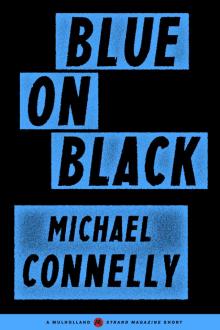 Blue on Black
Blue on Black The Black Ice (1993)
The Black Ice (1993) Crime Beat: A Decade of Covering Cops and Killers
Crime Beat: A Decade of Covering Cops and Killers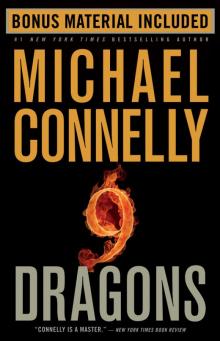 Nine Dragons
Nine Dragons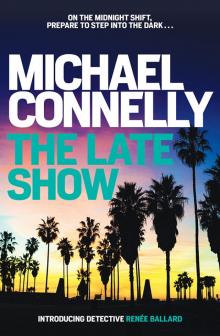 The Late Show
The Late Show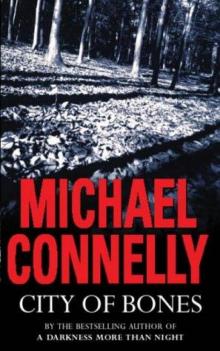 City of Bones
City of Bones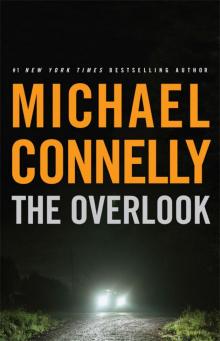 The Overlook
The Overlook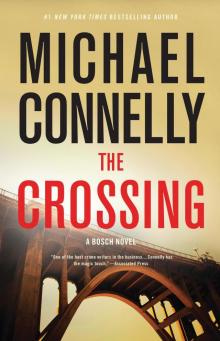 The Crossing
The Crossing The Poet (1995)
The Poet (1995)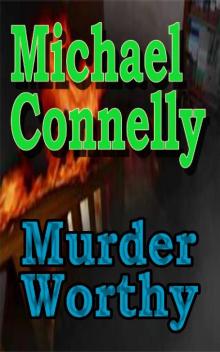 Murder Worthy
Murder Worthy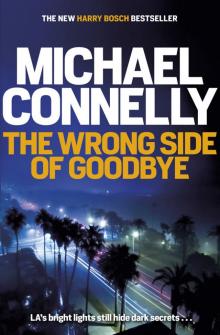 The Wrong Side of Goodbye
The Wrong Side of Goodbye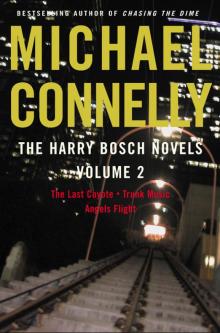 Harry Bosch Novels, The: Volume 2
Harry Bosch Novels, The: Volume 2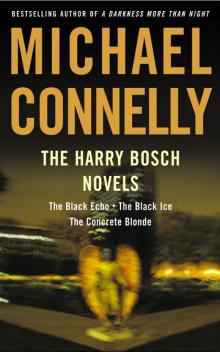 The Harry Bosch Novels
The Harry Bosch Novels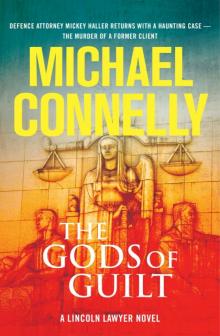 The Gods of Guilt
The Gods of Guilt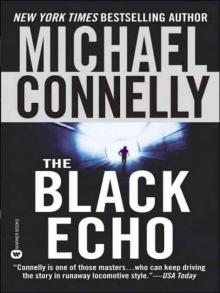 The Black Echo
The Black Echo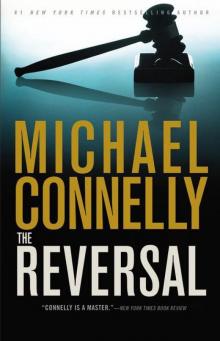 The Reversal
The Reversal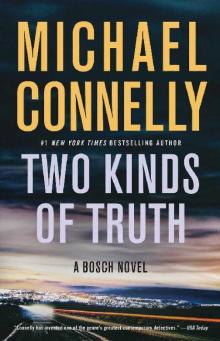 Two Kinds of Truth
Two Kinds of Truth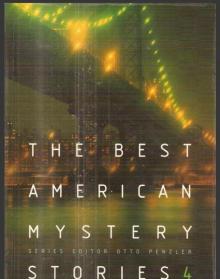 The Best American Mystery Stories 2003
The Best American Mystery Stories 2003 The Rag
The Rag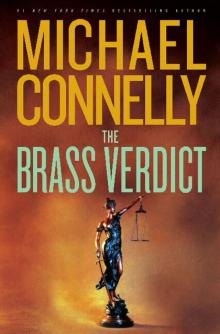 The Brass Verdict
The Brass Verdict The Black Echo (1992)
The Black Echo (1992)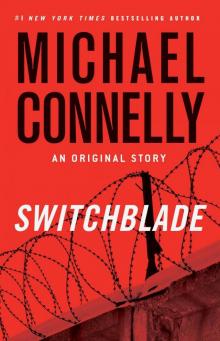 Switchblade
Switchblade The Last Coyote
The Last Coyote The Narrows
The Narrows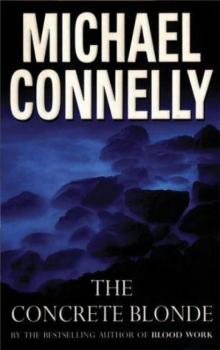 The Concrete Blonde (1994)
The Concrete Blonde (1994)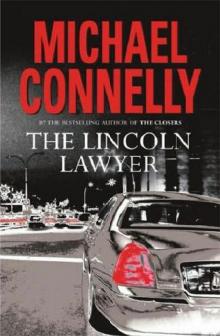 THE LINCOLN LAWYER (2005)
THE LINCOLN LAWYER (2005)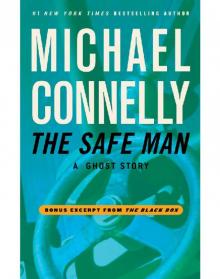 The Safe Man: A Ghost Story
The Safe Man: A Ghost Story Angels Flight (1998)
Angels Flight (1998) Void Moon
Void Moon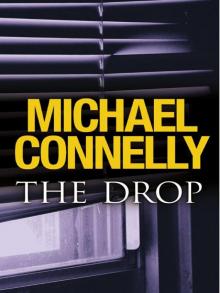 The Drop
The Drop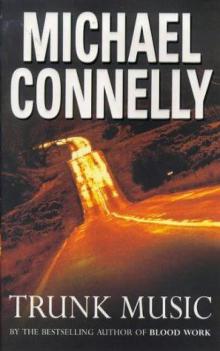 Trunk Music
Trunk Music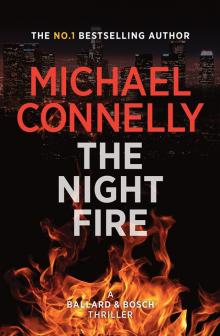 The Night Fire
The Night Fire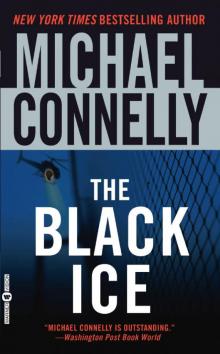 The Black Ice
The Black Ice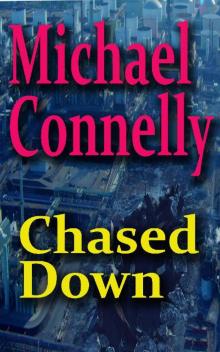 Chased Down
Chased Down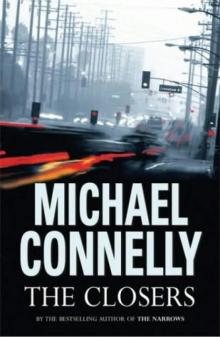 The Closers
The Closers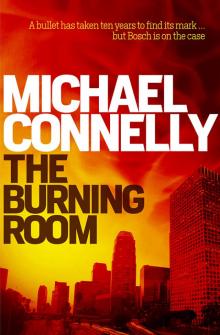 The Burning Room
The Burning Room Angels Flight
Angels Flight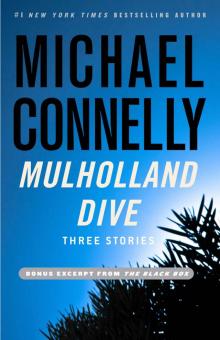 SSC (2012) Mulholland Drive
SSC (2012) Mulholland Drive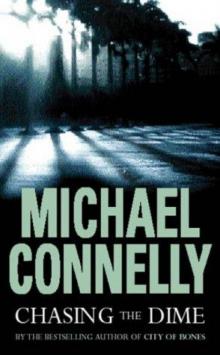 Chasing the Dime
Chasing the Dime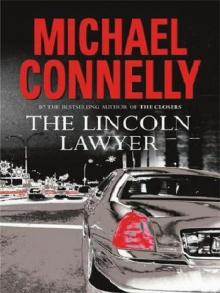 The Lincoln Lawyer
The Lincoln Lawyer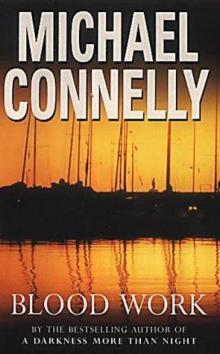 Blood Work (1998)
Blood Work (1998)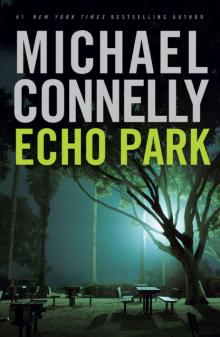 Echo Park
Echo Park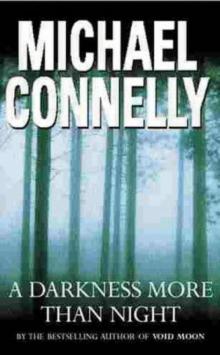 A Darkness More Than Night
A Darkness More Than Night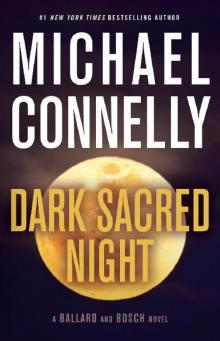 Dark Sacred Night - Ballard and Bosch #1;Renée Ballard #2
Dark Sacred Night - Ballard and Bosch #1;Renée Ballard #2 Lost Light
Lost Light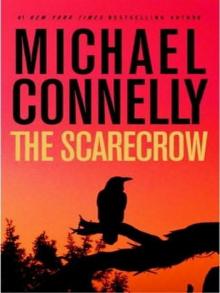 The Scarecrow
The Scarecrow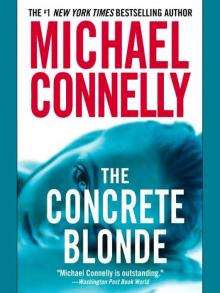 The Concrete Blonde
The Concrete Blonde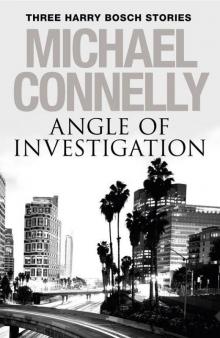 Angle of Investigation
Angle of Investigation Suicide Run: Three Harry Bosch Stories
Suicide Run: Three Harry Bosch Stories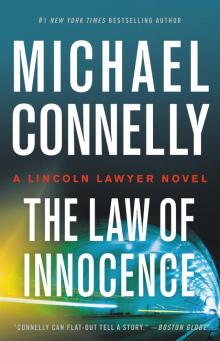 The Law of Innocence
The Law of Innocence Murder in Vegas: New Crime Tales of Gambling and Desperation
Murder in Vegas: New Crime Tales of Gambling and Desperation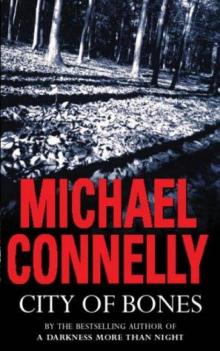 City Of Bones (2002)
City Of Bones (2002)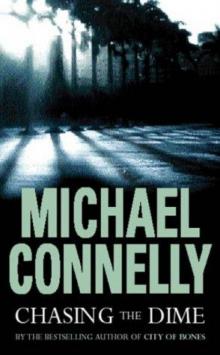 Chasing the Dime (2002)
Chasing the Dime (2002)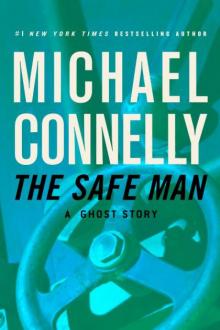 The Safe Man
The Safe Man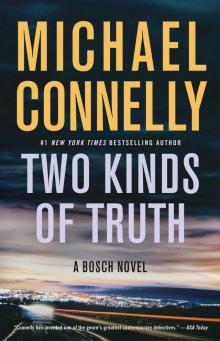 Two Kinds of Truth (A Harry Bosch Novel)
Two Kinds of Truth (A Harry Bosch Novel)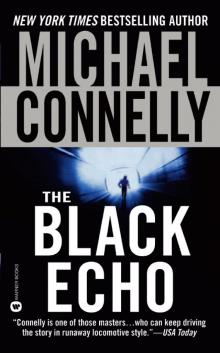 Harry Bosch 01 - The Black Echo
Harry Bosch 01 - The Black Echo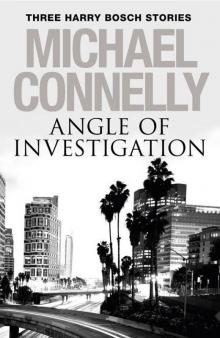 Angle of Investigation: Three Harry Bosch Short Stories
Angle of Investigation: Three Harry Bosch Short Stories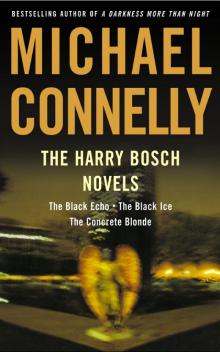 The Harry Bosch Novels Box Set 1
The Harry Bosch Novels Box Set 1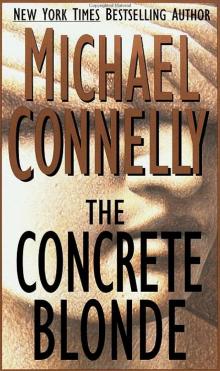 The Concrete Blonde hb-3
The Concrete Blonde hb-3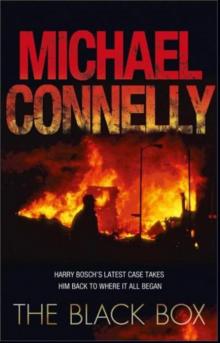 The Black Box hb-18
The Black Box hb-18 Short Stories
Short Stories The Black Ice hb-2
The Black Ice hb-2 The Last Coyote (1995)
The Last Coyote (1995)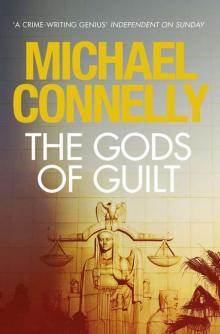 The Gods of Guilt mh-5
The Gods of Guilt mh-5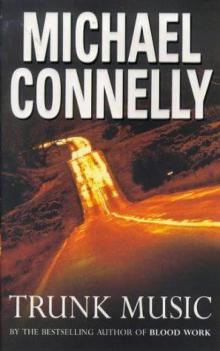 Trunk Music (1996)
Trunk Music (1996)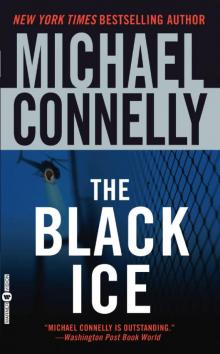 Harry Bosch 02 - The Black Ice
Harry Bosch 02 - The Black Ice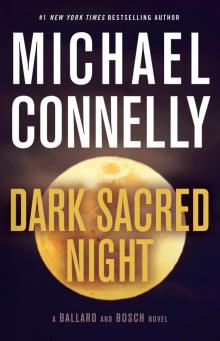 Dark Sacred Night
Dark Sacred Night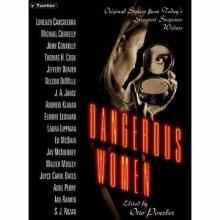 Cielo Azul
Cielo Azul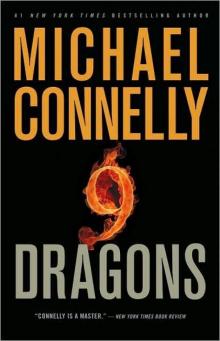 9 Dragons
9 Dragons The Narrows (2004)
The Narrows (2004)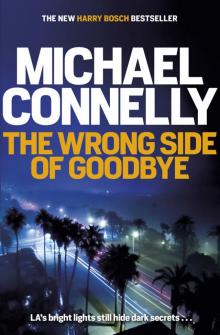 The Wrong Side of Goodbye (Harry Bosch Series)
The Wrong Side of Goodbye (Harry Bosch Series)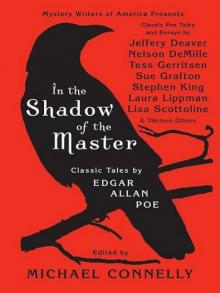 In The Shadow Of The Master: Classic Tales by Edgar Allan Poe
In The Shadow Of The Master: Classic Tales by Edgar Allan Poe Void Moon (1999)
Void Moon (1999)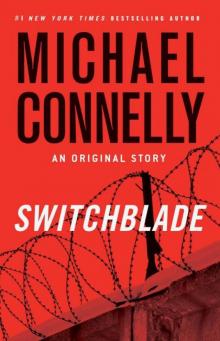 Switchblade: An Original Story (harry bosch)
Switchblade: An Original Story (harry bosch) The Harry Bosch Novels, Volume 2
The Harry Bosch Novels, Volume 2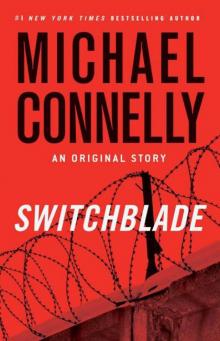 Switchblade: An Original Story
Switchblade: An Original Story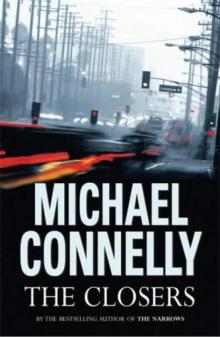 The Closers (2005)
The Closers (2005)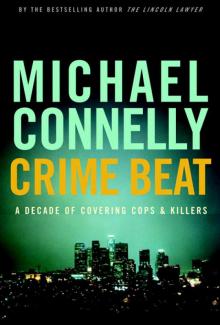 Crime Beat
Crime Beat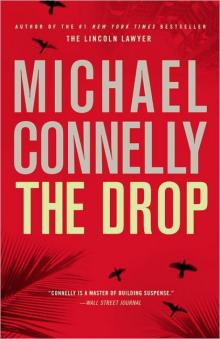 The Drop hb-17
The Drop hb-17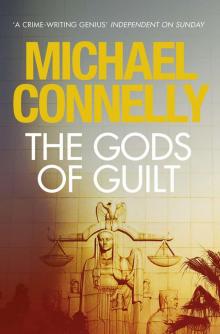 The Gods of Guilt (Mickey Haller 5)
The Gods of Guilt (Mickey Haller 5)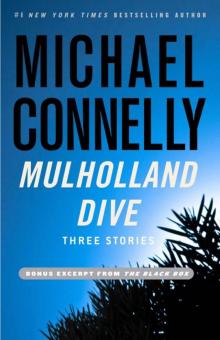 Mulholland Dive: Three Stories
Mulholland Dive: Three Stories Lost Light (2003)
Lost Light (2003)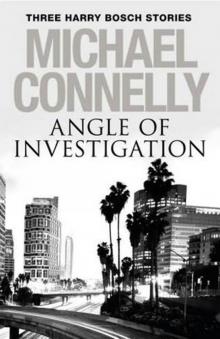 Angle of Investigation: Three Harry Bosch Stories
Angle of Investigation: Three Harry Bosch Stories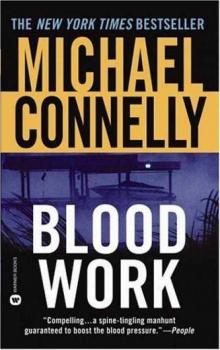 Blood Work
Blood Work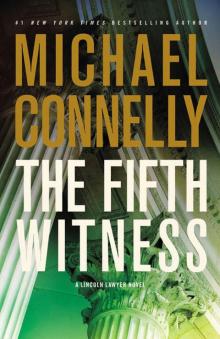 The Fifth Witness: A Novel
The Fifth Witness: A Novel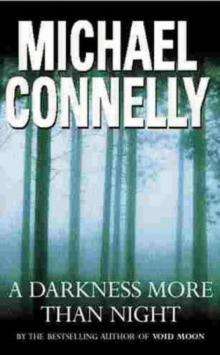 A Darkness More Than Night (2000)
A Darkness More Than Night (2000)